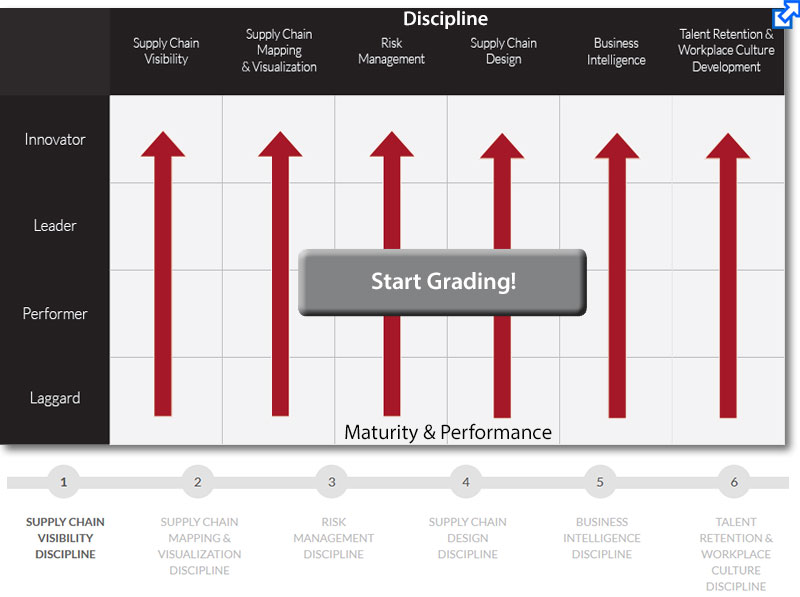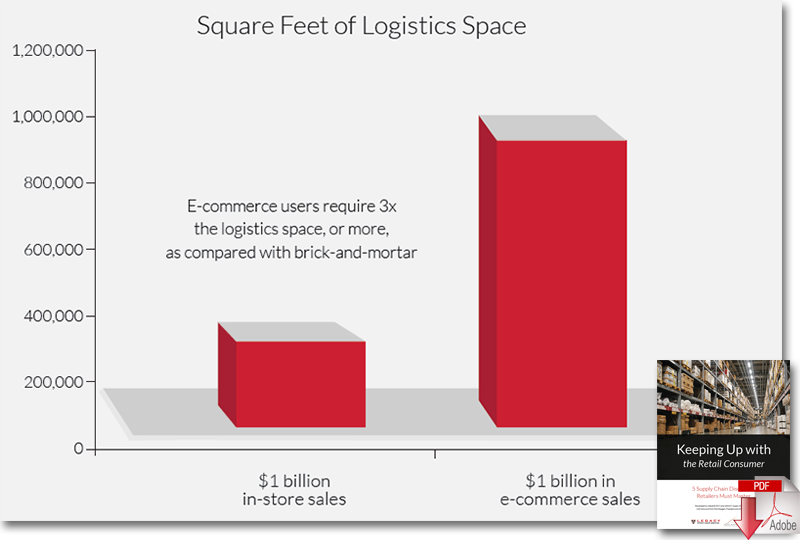“How can retailers drive profitable growth moving forward? More specifically, how can supply chain and logistics operations help retailers increase sales, gain market share, and improve margins?”
So asks Adrian Gonzalez, the founder and president of Adelante SCM and the co-author with LEGACY Supply Chain Services of a new e-book, Keeping Up with the Retail Consumer: 6 Supply Chain Disciplines Retailers Must Master.
To add to its pedigree, the book also includes a forward from Rick Blasgen, president and CEO of CSCMP.
Regular readers of Supply Chain Management Review may recall Gonzalez’s article on social media and the supply chain from July 2013 or the case study on LEGACY’s approach to the purpose-driven supply chain from July 2014.
As the title implies, the e-book is written for retail supply chain managers.
Gonzalez and LEGACY Supply Chain Services present 6 fundamental supply chain disciplines that retail leaders of tomorrow must master. But more than that, they have also developed a tool – The Supply Chain Performance Grader – that allows businesses to evaluate over 25 aspects of their supply chain grouped within those six disciplines.
The tool provides a supply chain report card along with specific recommendations on how to improve supply chain performance and increase efficiencies.
I had a chance to talk last week to Gonzalez and Mike Glodziak, president of LEGACY Supply Chain Services, about the new tool and book, starting with why and how the project came about?
Gonzalez said his interest in the project was sparked by his conversations with retailers in recent years. The industry is in the midst of huge changes driven by consumers rather than the needs of the retail enterprise.
It is perhaps the ultimate expression of a demand-driven pull model versus the traditional push model.
The challenge for retailers is how to meet new consumer demands in a profitable way: They’re evolving from just trying to get market share at whatever cost to figuring out how to make money at the same time.
“Retailers are dealing with the Amazons of the world, international sourcing, and logistics such as what’s going on in the West Coast ports,” Gonzalez said. “What I hear from the industry is: We have to manage these things in a way that enables profitable growth.”
Which begs the question that is bedeviling the retail industry: How do you do that?
The answer, according to Gonzalez and Glodziak, was to identify six supply chain disciplines that rose to the surface during research conversations with retailers and that serve as a common thread.
The 6 Fundamental Disciplines are:
- Supply Chain Visibility
- Supply Chain Mapping & Visualization
- Supply Chain Risk Management
- Supply Chain Design
- Supply Chain Business Intelligence, and near and dear to LEGACY’s heart;
- Supply Chain Talent Retention & Workplace Culture Development
Rather than a deep dive into every facet of supply chain management, these six serve as a foundation to enable leading best practices in those functional areas.
The six apply not just to retailers, Glodziak said, but also “for service providers, such as 3PLs,” that must continually invest in to meet the changing needs of their customers.
In fact, he believes the concept is relevant to other industries as well. “If you operate a supply chain, this tool could apply,” he said.
So, how does it work? Glodziak says the online exercise takes about 15 minutes to complete. There are five questions under each of the six disciplines and four possible grades that will indicate where your organization stands. “It’s an easy self-assessment tool,” he said.
In addition, the tool will make recommendations of things you should look at to move up the maturity curve and insights into what industry leaders are doing.
Both see the tool as a way for retailers to drive continuous improvement as they meet the changes coming at the industry. Moreover, both see the tool evolving as the needs of the industry evolve.
“You could take the results to Friday’s team meeting and look at the areas where you scored low,” Gonzalez said. “And, if you work in a 3PL, you make look at the areas where you and your partners can participate together.”
Excerpt from “Keeping Up with the Retail Consumer” e-Book
The Impact of E-Commerce on Retail Supply Chains
Further up the distribution chain, as e-commerce volumes grow, so will the need for more logistics space
According to the industrial real estate firm Prologis, “e-commerce users require 3x the logistics space, or more, as compared with brick-and- mortar” due to a variety of factors, including the need to carry a broader variety of SKUs, the need to carry greater levels of buffer stock, the allocation of space for returns processing, and the fact that individual order picking, packing and shipping direct to consumers requires more space than store distribution.
From Prologis’ perspective, “Retailers will continue to proceed along the arc of e-commerce fulfillment requirements, initially growing within existing distribution networks, then leveraging-multi tenant facilities and 3PLs to scale and ultimately requiring dedicated facilities. As online retailers reach sufficient size and scale, fulfillment models will emphasize proximity to major population centers, allowing for faster delivery times, higher service levels and greater flexibility in the supply chain.”
Article topics















